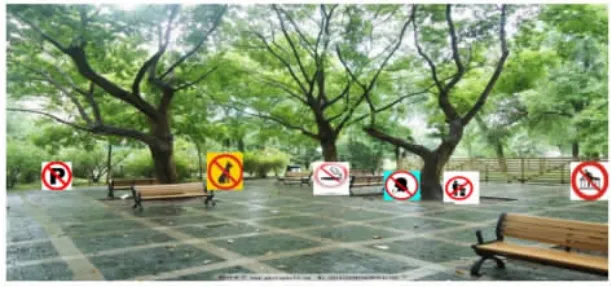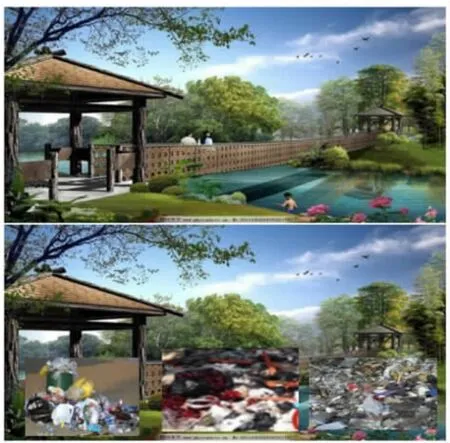译林新版《英语》六(上)复习课教学设计
李春阳
教学过程
一、师生问答,导入主题(略)
二、深入复习,层层递进
1.配乐滚动播放北京著名景点的图片,组织学生欣赏。
T:What did you see in the video just now?
S:Palace Museum, the Great Wall, Summer Palace,Tian’anmen Square... 教师点出相应的图片,充分利用白板的感观效果,请学生拖动白板,将图片和英文匹配,将图片拖到合适的位置。

设计意图:充分利用白板的感观效果,让学生参与到活动中来。既增加了课堂的趣味性,同时又增大了课堂的容量。减少课堂教学时间,增大课堂练习量,学生能有较高的热情参与到教学中去,并有效复习第三单元“Holiday fun”的主要词汇。
2.白板呈现北京、台北,上海、香港、伦敦等大城市的图片。
T:Boys and girls,where did you go on your National Day holiday?What did you do there?
S1:I went to...I...
S2:I went to...I...
T:on National Day holiday you visited different places.I think you all had a lot of fun.Can you tell me some interesting things about the city?Can you choose one to tellus? If you want to ask about your favourite city,you can ask and answer like this.
Can you guess what city it is?
The city is...
Which country isthe city in?
It is in...
How is the weather in...?
What interesting places will we see in the city?
What food willwee atin the city?
Did you...?
Yes,I did./No,I didn’t.I...

要求学生快速说出城市名称和所在国家,以及这个城市的相关信息。学生依据图片,上台当小老师,依据教师给出的句型提示进行生生互动,引导学生从介绍自己喜欢的城市。
设计意图:让学生仔细观察图片,提出问题,激发学生的发散性思维,教师让学生走上讲台作小老师,提出问题,活跃课堂气氛,充分体现课堂中的生生互动,学生兴趣高涨。然后通过生生互评的方式完成形成性评价。
教师先以北京为例:
T:What’s the weather like in Beijing?
S:In Beijing, spring is short and windy.In summer,it isusually very hotand rainy.Autumn is usually sunny and cool.Winter is cold and dry.
T:Whatin teresting places will we see in Beijing?
S:You’ll see the Great Wall,the Palace Museum,the Summer Palace, Tian’anmen Square in Beijing.
T:What food will we eat in the city?
S:You’ll eat Beijing Roast Duck and some delicious snacks.
T:...
教师稍做引导后将教学环节交给学生完成,教师利用白板的视频播放功能,引导学生进行深入的学习。通过看图、讨论,表演的活动,让学生在不知不觉中进入了教师精心创设的英语情境,他们可以用一般过去时的特殊疑问句或一般疑问句来了解同学或者朋友最喜爱的城市。学生的学习积极性一下子被调动起来,原本枯燥的句型复习有了较强的趣味性。
设计意图:教师先和学生进行问答活动,要求学生快速说出这个城市的气候特征、特色食物和著名旅游景点,加深对具体城市的了解,以巩固句型的学习,调动学生参与课堂学习的积极性。然后教师将“师问生答”的形式拓展为“生问生答”或“生问师答”增加学生学习的新鲜感,乐于参与课堂。
3.请学生选择一个自己喜欢的城市,查阅资料,制作信息卡。
设计意图:这一环节是由学生说的环节进入到写的环节,层层递进,一步步提交任务的难度,在趣味性学习的基础上增加学习的知识性提高。设计适当的习题,既能培养学生“写”的能力,也可以让他们再次巩固所学知识。有利于技能向能力转化,也有利于知识结构转化为认知结构。
三、触类旁通,纵向深入

1.Understand the signs.
T:In Beijing,I went to a park.Here is the photo of the park.Is it beautiful?
S:Yes,it is.
T:Look,there are some signstoo.Look atthis.What does it mean?
S:It means “No smoking”.It means you can’t smoke here.
T:Good,can you ask and answer in pairs?

(学生两人一组进行问答)
S1:What does it mean?
S2:It means“No parking”.Itmeansyou can’tpark your car here.
...
教师总结有关标识的短语,归纳出“No+名词/动名词”结构。
设计意图:以教师游览北京为主线,自然地引入第五单元“signs”的复习,使整个教学设计自然融为一体。
2.Ask and answer.
T:This park is beautiful.
Look atthispicture.How beautiful it is!
出示一张环境优美的图片,然后出示环境污染的画面将原有图片覆盖。

T:Butsomething makes them dirty.They are not so beautiful.What makes them dirty?
S1:Smoke makesthe air dirty.
S2:Rubish makes the streets messy and dirty.
S3:...(学生自由回答)
T:What can/should we do to keep our city clean?

S1:Wecantakethebus and the metro to school.
S2:We can move some factories away from our city.
S3:We can plantmore trees.
S4:...(学生自由回答)
教师总结“can/should/shouldn’t+动词原形”的结构。
设计意图:教师给出画面提示,让学生用英语描述看到的情景,充分运用所学句型表达。让学生们充分认识到污染的严重性,保护环境的重要性。
3.复习句型“What can we do to...”。
T:What can we do to keep our school clean?
Ss:We can...in the bin.
Ss:Whatcan we do to keep the classroom clean?
Ss:We can...the desks and chairs.
...

设计意图:学生往往习惯于回答教师的问题。在复习课上,大胆放手让学生运用所学语言自主提问,在相互的问题碰撞中充分发散思维,对发展学生的语言运用能力效果非常好。
4.Choose and say.
T:Now let’slook atthis picture.Which one do you want to choose in the picture,A or B?First discuss with your partner,and tell your partner why you choose it.
S:(与同桌讨论)

S:Iwould liketochoose Picture B.
T:Why?
S:Because in picture A,the boy keeps water running when he is brushing his teeth.The boy doesn’tturn offthe tap.
T:Good,so we...(用白板呈现句子:We shouldn’t waste water.We should save water.)
S:(朗读句子)
T:Great! What about the next pictures?(用白板呈现一组照片)If your home is near your school,do you go to school on foot or by car?

S:Myhomeisnearmy school,and Igotoschoolon foot.So...
T:Why?
S:Because we need gas to start the car.If I go to school on foot,I can save energy.
T:I’m so glad to hear that.We should...(用白板呈现句子:We should save energy.We shouldn’t drive so much because cars use a lot of gas)
S:(朗读句子)
(同法进行剩下的两组图片)
T:Great! I think you have already taken action to protect the Earth.
设计意图:展示四组图片供学生讨论、选择,并运用已有语言知识说出自己选择的理由。在此过程中了解哪些是环保的做法。
5.Find and stick.
T:There is not much water in many places.There is not much coal or oil on the Earth.People cut down too many trees.They use too many plastic bags and bottles.The Earth issad.How can we make her beautiful and happy again?
S:We should save water,save energy,save trees and we shouldn’t use too much plastic.
T:Yes, and we should reuse and recycle things.I asked you to find this kind of photos on the Internet.Did you find any photos like this?
S:Yes,we do.
设计意图:通过图文并茂的形式来小结地球的现状,让学生了解reuse和recycle的重要性。同时引导学生课前通过书籍、网络查询所需信息,让学生有意识地参与到问题的思考中。
6.Brainstorming.
T:Now,let’sthink about whatwe can reuse.Firstyou can writethem down on your paper,and then discuss with you partners.
S:(学生快速在纸上写下能循环使用的物品名称,写好后快速与同桌交流)
T:Now tellme whatwe can reuse.
S:We can reuse water/old clothes/paper/plastic bottles or glass bottles.
T:What else?
S:We can reuse Coke cans,newspapers and many other things.
T:Look at the following pictures.Some people think they are rubbish,butsome people think they are treasure.Do you know why?
S:Because people can recycle them.
T:Yes.These thin gscan be recycled.What else can we recycle? Doyou know?Please discuss in groups.
S:(分组讨论)We can recycle glasses/paper/old TVs/...
T:I’m so glad that you know so much.After class,you can surf the In ternet to learn what we can change these things into,and what you are going to do with these things.I hope you can share your ideas next time.If you say in English,you can say in Chinese with pictures.
设计意图:相对谈论重复使用的物品,谈论循环利用需要用到的语言更多。学生能在课堂上列举可以循环利用的物品值得表扬,课后即便是用中文搜索如何循环利用这些资源也能让他们有很大的收获。
7.Summmy.
T:Today,you know very clearly aboutmy trip.In my trip,I saw many signs.Your are very cleverand tellme what they mean.You also tell me we should protect the earth and how toprotectthe earth.You did a good job in this lesson.You are smart!

